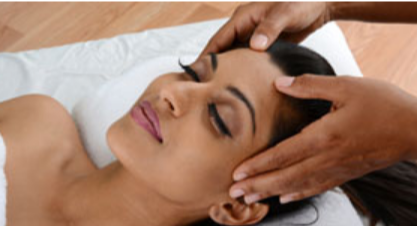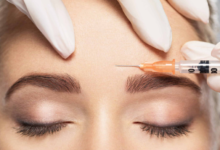The History and Healing Power of Indian Head Massage

From ancient rituals to contemporary wellness clinics, Indian Head Massage has long held a revered place in holistic healing. This gentle yet effective treatment focuses on the head, neck, and shoulders — areas that tend to hold the most tension — and is known for its ability to soothe the nervous system, relieve stress, and promote overall well-being. Understanding the history and healing potential of this practice offers insight into why it remains such a popular choice in modern therapies.
Ancient Roots in Ayurveda
The origins of Indian Head Massage lie in the traditional Indian system of medicine known as Ayurveda, which dates back thousands of years. It began as a daily practice among Indian families, where techniques were passed down through generations. These rituals weren’t just about physical relaxation — they were deeply spiritual and symbolic of care, love, and balance.
Initially focused on the scalp to promote hair health, the practice eventually evolved to include the shoulders, neck, face, and upper back, reflecting the Ayurvedic understanding that tension and energy flow are interconnected throughout the body.
How the Technique Works
Indian Head Massage uses a combination of stroking, tapping, kneading, and pressure-point stimulation to target areas where stress accumulates. These areas are rich in nerve endings and muscular connections, making them particularly receptive to therapeutic touch.
Sessions are typically performed with the recipient seated or lying down, fully clothed or partially draped, depending on the setting. The massage stimulates blood flow, encourages lymphatic drainage, and helps to release physical and emotional tension stored in the upper body.
Key Benefits of Indian Head Massage
1. Stress Relief
One of the most immediate effects is a deep sense of relaxation. The massage stimulates endorphins, promoting a calmer mood and reducing anxiety levels.
2. Alleviates Headaches and Migraines
By reducing muscle tension in the neck and shoulders, Indian Head Massage can help prevent or lessen the severity of tension headaches and migraines.
3. Improves Sleep Quality
The calming effects on the nervous system make this an effective treatment for people who struggle with insomnia or disrupted sleep patterns.
4. Boosts Circulation
Improved blood flow to the scalp and upper body supports healthier skin, encourages hair growth, and assists in toxin elimination through better lymphatic function.
5. Enhances Mental Clarity
As the mind relaxes, many people report clearer thinking and improved concentration following a session.
A Timeless Practice in a Modern World
What makes Indian Head Massage especially unique is its versatility and adaptability. It can be used as a stand-alone treatment or integrated into a broader wellness routine. Whether experienced in a spa, a clinic, or even at home, the core principles remain rooted in promoting balance and rejuvenation.
Its growing popularity in the West is a testament to its effectiveness. In today’s fast-paced world, where screen time is high and posture issues are common, therapies that focus on head, neck, and shoulder tension are more relevant than ever.
Final Thoughts
With its rich cultural history and wide-ranging therapeutic benefits, Indian Head Massage continues to be a powerful tool for relaxation, healing, and emotional well-being. Whether you’re exploring complementary therapies or simply seeking a natural way to unwind, this ancient practice offers time-tested support for modern stressors.
To experience the full benefits of Indian Head Massage, consider visiting a trained practitioner who honours its traditional techniques and holistic approach.
Contact Walking on Clouds today to book your Indian Head Massage and discover the healing tradition for yourself.






